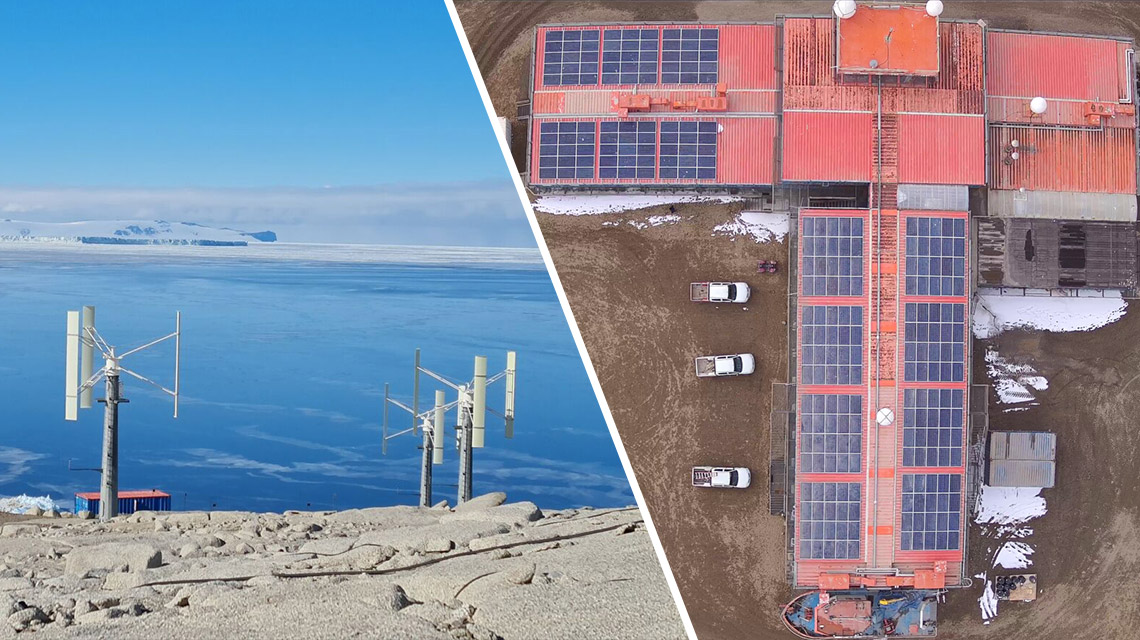Italian National Agency for New Technologies, Energy and Sustainable Economic Development

Energy: Antarctica, the Mario Zucchelli station becomes increasingly "renewable"
The 39th research expedition has just concluded at the Italian Mario Zucchelli base in Antarctica[1], where over 20% of power supply was provided by clean energy, thanks to the expansion of a photovoltaic system, capable of "capturing" solar radiation -available 24 hours a day during the austral summer-, and the optimization of a wind farm, capable of converting katabatic winds, among the most powerful on the planet, into energy.
The Mario Zucchelli station, located in Terra Nova Bay’s area, is open every year from mid-October to mid-February. It accomodates approximately 90 people, providing logistical support to participants of Italian expeditions and scientists working in remote fields or in transit to the Italian-French Concordia and Dumont D'Urville stations.
The average annual energy requirement of the station, estimated at approximately 500 MWh, covered by approximately 150 cubic meters of fossil fuel. In order to make energy supply more sustainable, the Mario Zucchelli station started an energy transition process a few years ago. “The ever-increasing use of renewable sources will contribute to dramatically reduce fossil fuels, with a consequent drop in emissions. Furthermore, we will be able to contain the costs of supplying and transporting fuel to one of the most remote places on earth", said Francesco Pellegrino, head of the Engineering Service of the ENEA Antarctic Technical Unit.
The wind farm requires the operation of 3 generators, approximately 8 meters high, with 5 meter vertical axis three-bladed turbines capable of developing, when fully operational, a total nominal power of 34.5 kW. The plant can produce around 30 thousand kWh in a year, reaching a maximum power of 40 kW. “To get to this, we had to work on the software, the braking system and other components of the power plant. Wind energy was a real challenge, since initially the system could not produce the expected energy due to the excessively high winds, which sent the turbines into protection until they shut down", pointed out Pellegrino. “The 'winter' operation of the power plant - he continued - required the use of a 5,600 Ah (Ampere-hour) battery pack wired inside a container, where the power produced is stored. These measures have allowed the plant to work for long periods, even in winter, when the site is unmanned."
The photovoltaic system is installed on an ad hoc structure anchored to the roof of the main building of the base and is able to resist bad weather and the typical sandblasting phenomena caused by katabatic winds. In the Antarctic summer the panels can producing around 40-50 MWh of electricity with power peaks of 40 kW. The facility is placed 'in conservation' during the Antarctic winter when the station is closed. “Solar photovoltaic has proven to be a mature technology, adaptable to the Antarctic context, even unmanned,” continued Pellegrino. “We expect a 20-30 kW power increase next year, from the entire coverage of the main building of the base and we are planning a further 40-50 kW increase to be installed on the roof of the hangars”, said Pellegrino.
The installation of the panels was part of a broader renovation project which provided a considerable improvement in the thermal insulation and efficiency of the base. A new roof was created with highly insulating materials to reduce heat dispersion and increase thermal and acoustic comfort. The metal frames were replaced with high-efficiency PVC frames. Traditional lighting was almost entirely replaced with high-efficiency LED lighting. During the latest expedition the installation of an advanced monitoring system was started, which tracks in detail the station's electrical, thermal and water energy consumption in order to target interventions.
Photogallery
Note
[1] The Italian missions in Antarctica, funded by the Ministry of University and Research (MUR) as part of the National Antarctic Research Program (PNRA), are managed by the Cnr for scientific coordination, ENEA for planning and logistics at the Antarctic bases and the National Institute of Oceanography and Experimental Geophysics (OGS) for the technical and scientific management of the icebreaker Laura Bassi.
